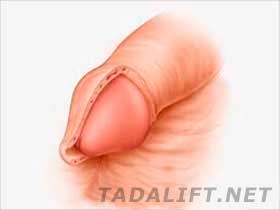While circumcision may serve a background for numerous jokes and stories, in reality, over 10-15% of all males have gone through this procedure. The reasons of the surgery are frequently traditional, cultural or sometimes even medical. While the experience may show some disadvantages and drawbacks that have already been widely discussed, it also has a range of advantages.  A prolonged sexual intercourse, enhanced pleasure and satisfaction are among them.
A prolonged sexual intercourse, enhanced pleasure and satisfaction are among them.
Generally, if you consider the procedure, you need to compare all the advantages and disadvantages before making a decision. The most significant benefit of the experience is the prolonged duration of a sexual intercourse. However, circumcision also presupposes a range of other advantages, including:
- Enhanced pleasure. According to the statistics, over 95% of women claimed they enjoy a sexual intercourse with males having a circumcised penis.
- Longer sex. The major advantage is explained by decreased sensitivity after the tip is snipped. Thus, on average, a man will ejaculate 20-30 seconds later than before.
- Decreased risk of sexually-transmitted disorders. The results of numerous medical research have shown that circumcision decreases the risk of HIV, HPV, syphilis, gonorrhea and other sexually transmitted diseases.
- Better satisfaction for both partners. Males, who have got circumcision, can advance the overall satisfaction and pleasure from the intercourse.
 With all its advantages and numerous drawbacks, circumcision remains a tricky experience. It can provide 100% benefit for some people and full disadvantages to others. Consulting a healthcare specialist can also help you make the right decision. So, make sure the experience will bring a significant number of pros, which will be worth the try. Discuss the issue with your partner, which is also important, as the effects will impair both of you.
With all its advantages and numerous drawbacks, circumcision remains a tricky experience. It can provide 100% benefit for some people and full disadvantages to others. Consulting a healthcare specialist can also help you make the right decision. So, make sure the experience will bring a significant number of pros, which will be worth the try. Discuss the issue with your partner, which is also important, as the effects will impair both of you.

